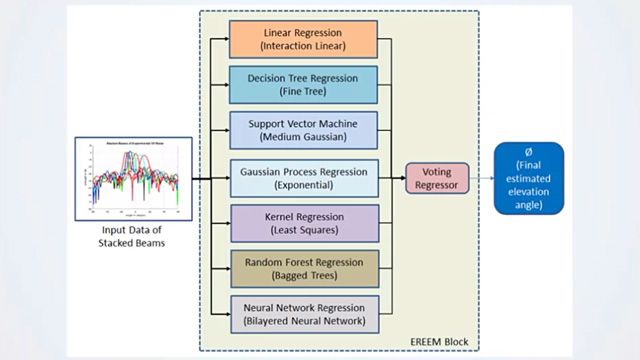Bharat Electronics Applies AI to Elevation Estimations from 3D Radar
“With the help of AI, a lot more can be done. We have found that if more data is not available, then simulated data can also be generated with the help of MATLAB.”
Key Outcomes
- The Sensor Array Analyzer app enabled custom sensor array design and visualization without requiring extra time to code complex simulations for generating data sets to train AI models
- The curve-fitting tool in MATLAB simplified the process of calculating elevation angle estimates and delivered a more accurate result
- The Regression Learner app evaluated data with multiple regression methods in order to find the best fit for accurate predictions
Bharat Electronics is a leading force in developing radar systems, including 3D surveillance radars. A crucial parameter for these radars is estimating the elevation of targets using either single or multipath beams. These beams can be disrupted by environmental factors, including multibeam reflections and thermal noise, and accounting for all these factors manually can be complex and time-consuming.
The team simplified this process by using Radar Toolbox to visualize different beam paths. The Sensor Array Analyzer app allowed them to easily manipulate various parameters, such as geometry and column tapering, and the Regression Learner app let the team quickly evaluate their data set using multiple regression methods to find the best fit. The Bharat Electronics team also generated simulated data using MATLAB® to fill in gaps.
Together, these AI tools created more robust and accurate elevation predictions while saving the team time on complex calculations and gathering field-recorded data.
